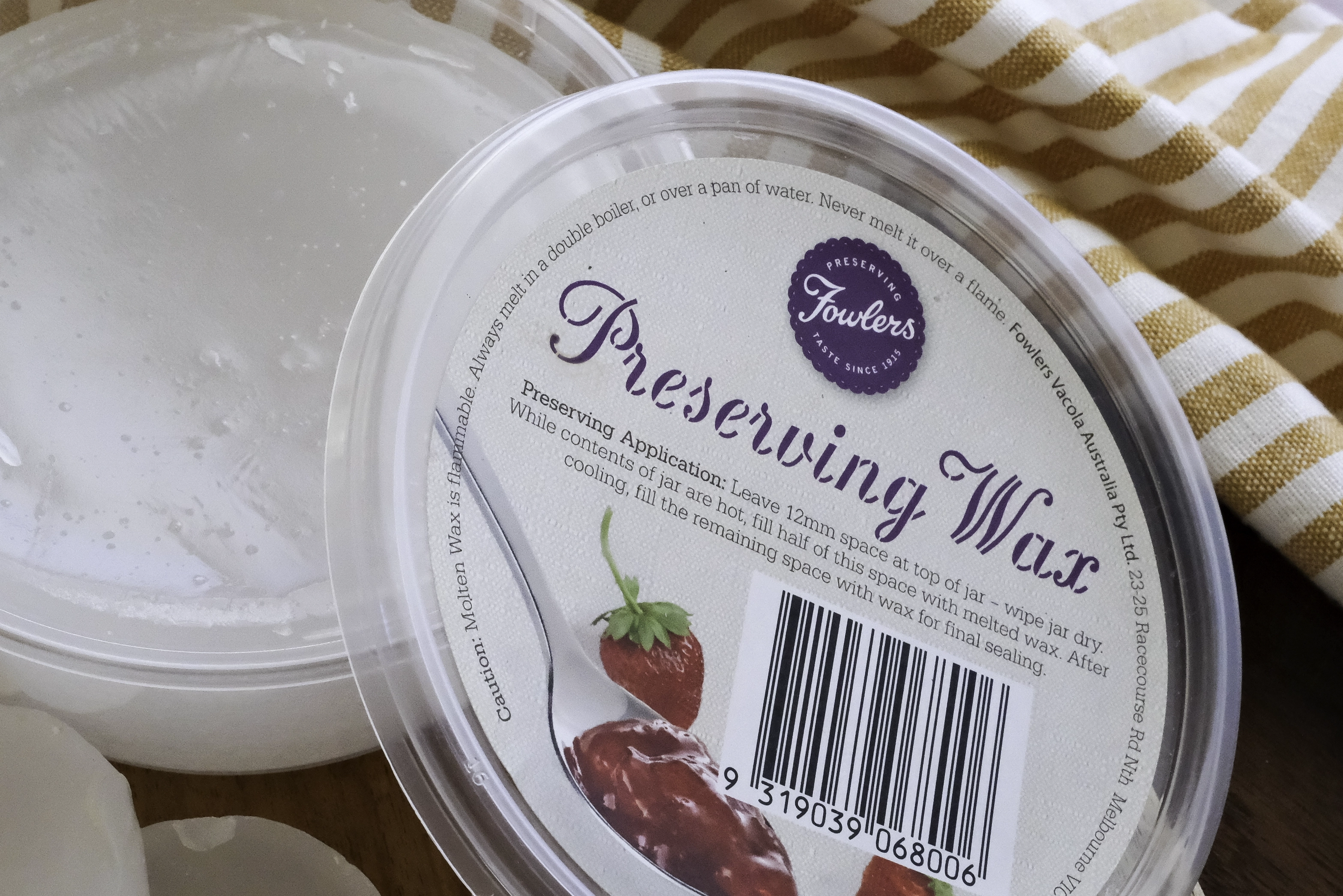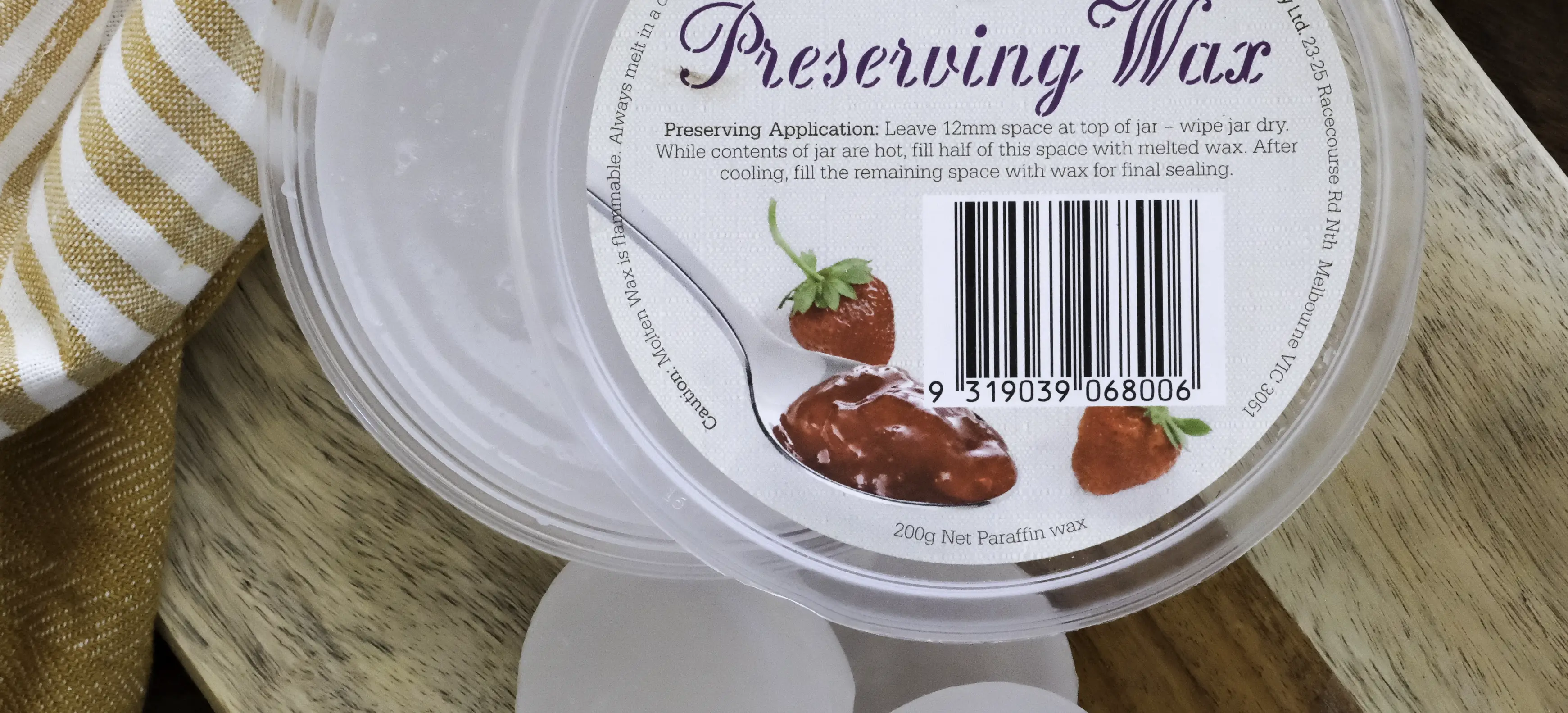
Sealing Jars with Paraffin Wax
- Reasons
- Technique
Paraffin wax was traditionally used as a method of sealing preserves in jars that didn’t have lids. Once considered a very economical and handy method to re-use lidless jars, this technique is now regarded as being out-of-date by today’s food preservation standards. The hot wax, poured over the preserve to seal it, shrinks away from the side of the jar as it cools. This shrinkage creates gaps around the jar, which become the entry point for bacteria, moulds and other impurities. Over time mould develops, particularly under the wax seal, and isn’t visible until the seal is broken.
If your preserve develops mould, discard immediately without consuming it. While it is common practice for some to scrape the mould off before eating it, this is not safe. Moulds develop long root threads which invade and deeply penetrate the food they grow in. Some moulds cause allergic reactions and respiratory problems and others, under the right conditions, produce poisonous mycotoxins which can make you sick.
I used this method in my early preserving days and I’m unaware of any health issues that I may have contracted from it. However, as food preservation storage research has developed over the years, to ensure my home-made preserves are safe for my family and friends, I only use this method for sealing fruit curds which are stored in the fridge and should be eaten within 6-8 weeks. My preferred methods of sealing containers, depending on the type of preserve are the HOT, HOT, HOT Method or the Hot Water Bath Method.
Sealing With Wax Method
To maximise the quality of the seal:
- the melted wax must be poured over the preserve while both are hot
- break the wax into small pieces and heat in a bowl set over a pan of hot water. Bring to the boil, reduce the heat to maintain a gentle simmer until the wax is just melted. Do not overheat
- Working quickly pour a thin layer of wax over the hot preserve. Tilt the jar to ensure the wax adheres to its side
- Using small wooden cocktail stick, toothpick, or cake skewer, prick any air bubbles. Allow the wax to set
- Then pour a second thin layer to make a seal approximately 3mm thick. When the wax has set it will become opaque and dip slightly in the middle.
- Cover with a cellophane disk and secure tightly with rubber band
- To use the preserve, break the wax seal and remove. Recover the jar with the cellophane after use and store in the fridge.
Remember sealing with wax is not a long-term solution and it not as safe has sealing the containers with lids. Use within a couple of months and do not use mouldy preserves.
Paraffin wax and cellophane disk packs are available at hardware stores and speciality preserving stores, rural hardware and some supermarkets.

